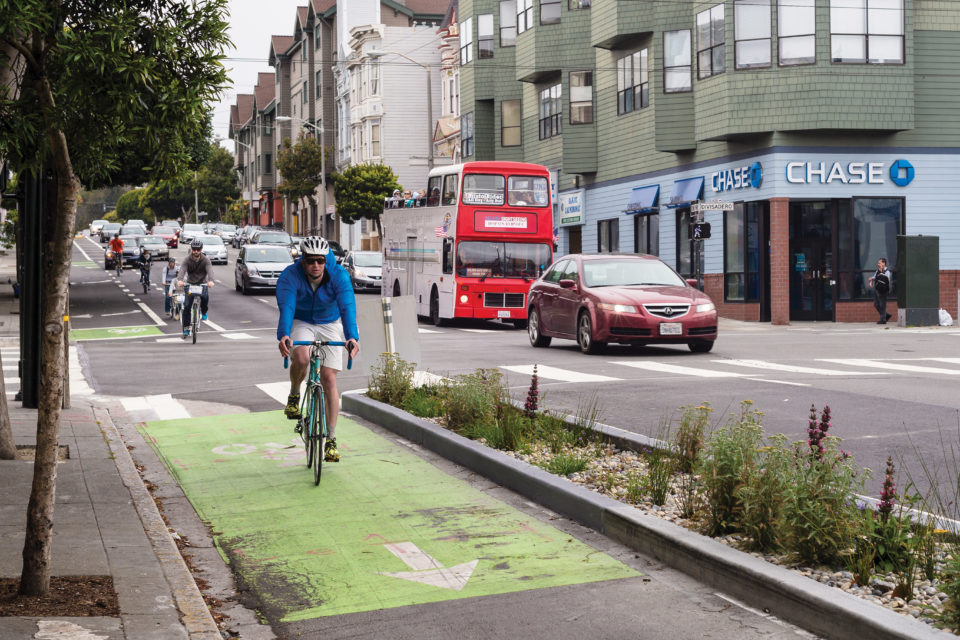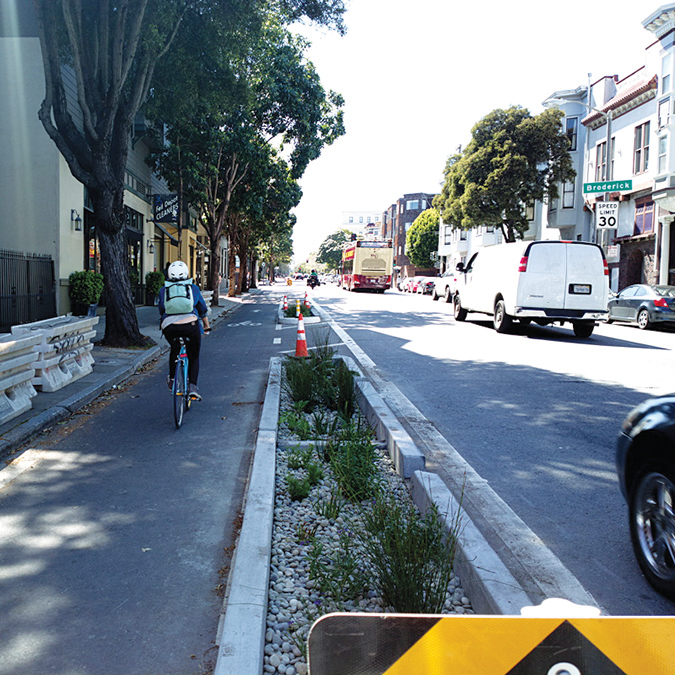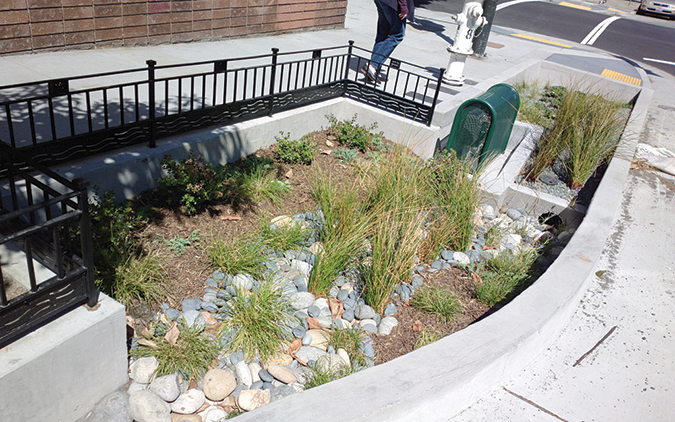
Oak Street, San Francisco (credit: Sergio Ruiz)
Project Length: 0.5 miles
Right-of-Way Width: 65 feet
Participating Agencies: San Francisco Municipal Transportation Agency, San Francisco Public Utilities Commission, San Francisco Department of Public Works
Timeline: Interim design, October 2012 – May 2013
Permanent design completed May 2015
Goals
Stormwater management: Manage a 5-year/3-hour storm event, or 1.25 inches of rain.
Mobility: Improve safety and comfort for people walking and biking along Oak and Fell Streets.
Placemaking: Improve aesthetics of the streets in the project area.
Overview
Fell and Oak Streets are vital links in San Francisco’s bicycle network, but featured conventional, unbuffered bike lanes next to relatively fast-moving traffic, resulting in an uncomfortable biking experience. The streets were redesigned with protected bike lanes separated from motor vehicle traffic by flex posts, bulbouts, daylighted intersections, and enhanced crosswalks.
The Fell and Oak Street area was later upgraded to integrate stormwater management features, including bioretention planters in expanded and upgraded corner bulbouts, permeable pavers to channel rainwater along the gutter, and planters in the bikeway buffer.
Design Details

Fell Street, San Francisco (credit: Jim Dyer)
The project integrated rain gardens into corner bulbouts, reclaiming space for stormwater management while simultaneously shortening crossing distances, improving pedestrian safety, and enhancing the street’s aesthetic value. The bulbouts capture runoff from the sidewalks.
A 5.5-foot wide strip of permeable pavement in the parking lane adjacent to the curb absorbs storm flows from the street.
The bikeway is separated from motor vehicle traffic by a 4-foot wide concrete median which holds planter boxes to catch rainwater and beautify the corridor.
Lessons Learned
Coordinate early and often. The original project team, SFMTA and SFDPW, received community requests for green infrastructure during project’s outreach phase. The stormwater design team at SFPUC was brought into a project already in process, requiring all stakeholders to play catch-up and learn to coordinate while already in process.
Take advantage of existing conditions. A primary lesson that SFPUC learned during this project, a test case for future projects, is to collect quality survey and existing conditions data, especially of local infiltration capacity. By capturing the infiltration of native soils, designers are able to correctly size and model facilities, saving on design and construction costs while meeting stormwater goals.
Don’t sacrifice “green for green.” Many locations in San Francisco have to balance between a need for improved tree canopy as well as bioretention.
Demonstrate the value of investments. Projects with unexpected cost increases could make it more difficult to justify spending on improvements later on. Be sure to accurately measure costs and projected outcomes to pick projects and designs that offer the most value.

Fell Street, San Francisco (credit: Jim Dyer)
Outcomes
Preliminary measurements indicate that the project is managing 90% of the stormwater runoff from the street.
98% of riders surveyed felt that the safety of bicycling in the project area had increased.